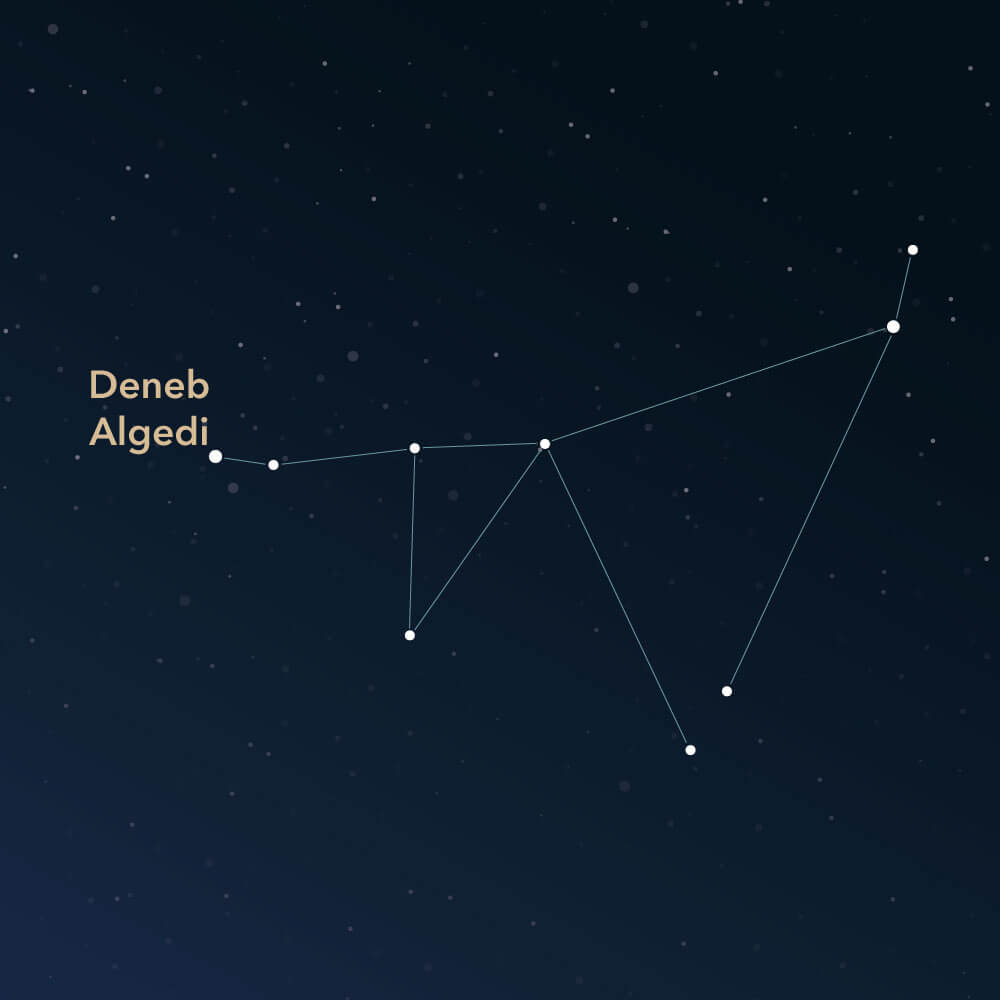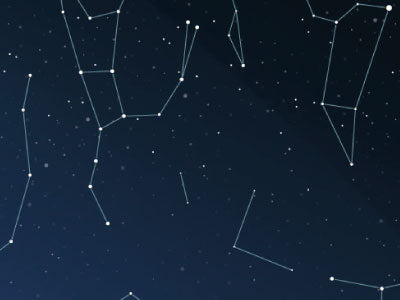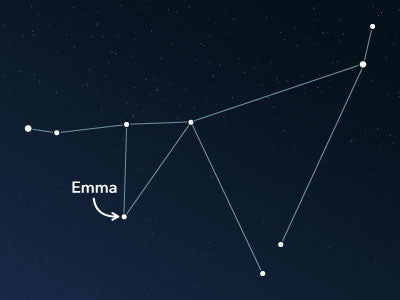The constellation Capricornus
Characteristics
- Other names / Symbolism
- Goat-Fish, Goat-Horned
- Hemisphere
- Southern hemisphere
- Visibility
- June - November
- Area
- 414 deg²
- Brightest star
- Deneb Algedi (HIP number 107556)
- Specialties
- Globular clusters

The Capricornus, Latin for a horned goat, symbolizes a goat-fish, which is a creature in Greek mythology. It is an inconspicuous zodiac constellation in the southern celestial hemisphere and is particularly well-known in astrology. It is one of the 48 ancient constellations described by the Greek-Roman astronomer Claudius Ptolemy. There are only a few deep-sky objects located in this area.
Hemisphere, visibility, and area
The constellation Capricornus is located in the southern sky and can be seen in many places. It can be observed from anywhere in the southern hemisphere, while north of the equator, it can be fully seen in the night sky up to the 63rd parallel. This corresponds roughly to regions such as the south of Iceland or Trondheim in Norway.
Capricornus lies on the ecliptic and is, therefore, one of the 12 astrological zodiac signs. The sun passes through the constellation every year between January 20th and February 16th. At this time, it cannot be observed as it rises and sets at the horizon simultaneously with the sun. Nevertheless, the astrological zodiac sign Capricorn is assigned to beings born between December 22nd and January 20th. This shift of about a month is due to the earth's precession movement.
The best conditions to discover the constellation are from June to November. It stretches over the night sky with an area of about 414 square degrees. Compared to all other 88 constellations, it ranks 40th in size.
In sky maps, Capricornus is visualized with a variety of stars in different ways. In some, the stars are connected to form an irregular triangle, while in others, a chain of stars is formed with two triangles.
The brightest star is Deneb Algedi (Latin: δ Cap, Delta Cap), with an apparent brightness of just 2.8. It is the only star in Capricornus that is brighter than 3 mag and forms the animal's hindquarters.
The faint stars make Capricornus not particularly conspicuous, so it is not easy to find in the night sky. The surrounding constellations can therefore provide a good orientation aid. Along the ecliptic, Sagittarius and Aquarius are in close proximity, while the Aquila, the Microscopium, and the Piscis Austrinus border it otherwise.
Specialties in the constellation
There are only a few objects to observe in the area of Capricornus.
One of them is the globular star cluster M30 (Messier 30), also known as NGC 7099. With an apparent magnitude of about 7.7, it is not particularly bright and cannot be perceived by the naked eye. In a pair of binoculars, it appears as a hazy spot and can only be resolved into individual stars with a larger telescope.
M30 is located roughly 24,000 light-years away and is estimated to have a mass 300,000 times that of the sun. The well-known French comet hunter Charles Messier discovered the object from Paris in August 1764.
History and mythology
Capricornus is one of the oldest constellations. The Babylonians defined the group of stars and called it the goat-fish. This term probably arose because the residents of the Arabian and Red Seas associated the constellation with the time when the goat-fish was caught.
It was only later, during the time of the Romans, that the constellation was renamed Capricorn. Nevertheless, it is still represented in many maps as the body of a goat and the hindquarters of a fish.
According to Greek mythology, the constellation represents the god Pan with goat legs. When he fled from the monster Typhon and jumped into the sea, he tried to transform himself into a fish, but only succeeded halfway. Typhon then attacked Zeus and tore out his tendons. Pan later helped Hermes to reattach the tendons to Zeus, who then overpowered Typhon. As a reward, Zeus placed Pan in the sky as the goat-fish.
Constellation Visibility Tool
Los Angeles, USA
34.05°, -118.24°
Constellation Observing Guide
This guide shows when the constellation is visible above the horizon and provides the optimal viewing window when the sky is darkest. Times are displayed in the location's timezone (PDT).
🎯 Best Observing Window
Optimal time when the constellation is fully visible AND the sky is at its darkest. Perfect for telescopic observations, astrophotography, and viewing faint details.
Optimal start
23:59
Jun 11, 23:59
Optimal end
04:34
Jun 12, 04:34
Duration
4.58h
Prime observing time
✨ Perfect Observing Conditions
This is the overlap when the constellation is above horizon AND the sky is at its darkest. Ideal for telescopic observations and photography.
Constellation Visibility from Your Location
7
Visible Stars
0
Never Rise
0
Always Up
100%
Visible
All stars of this constellation can be observed from your location
Constellation Visibility
When the constellation is above the horizon (includes daylight hours)
Rises
22:20
Jun 11
Fully Up
23:59 – 09:04
Jun 11
Starts Setting
09:04
Jun 12
Fully Set
10:34
Jun 12
Above Horizon Times
Includes daylight hours when stars aren't visible to naked eye.
Astronomical Night
When the sky is darkest (sun >18° below horizon)
Dark sky begins
21:14
Jun 11
Dark sky ends
04:34
Jun 12
Darkest Sky Period
Sun more than 18° below horizon. Best for faint objects.
Observing Tips
Read more interesting articles

An overview of all 88 constellations
Learn more about all 88 constellations and read interesting information about the mythology, visibility, and features.

Planetarium App
Discover the night sky with our planetarium app!
Available for iOS and Android.

Name a star in the constellation Capricornus
Name a star in a constellation and create something that lasts for eternity.